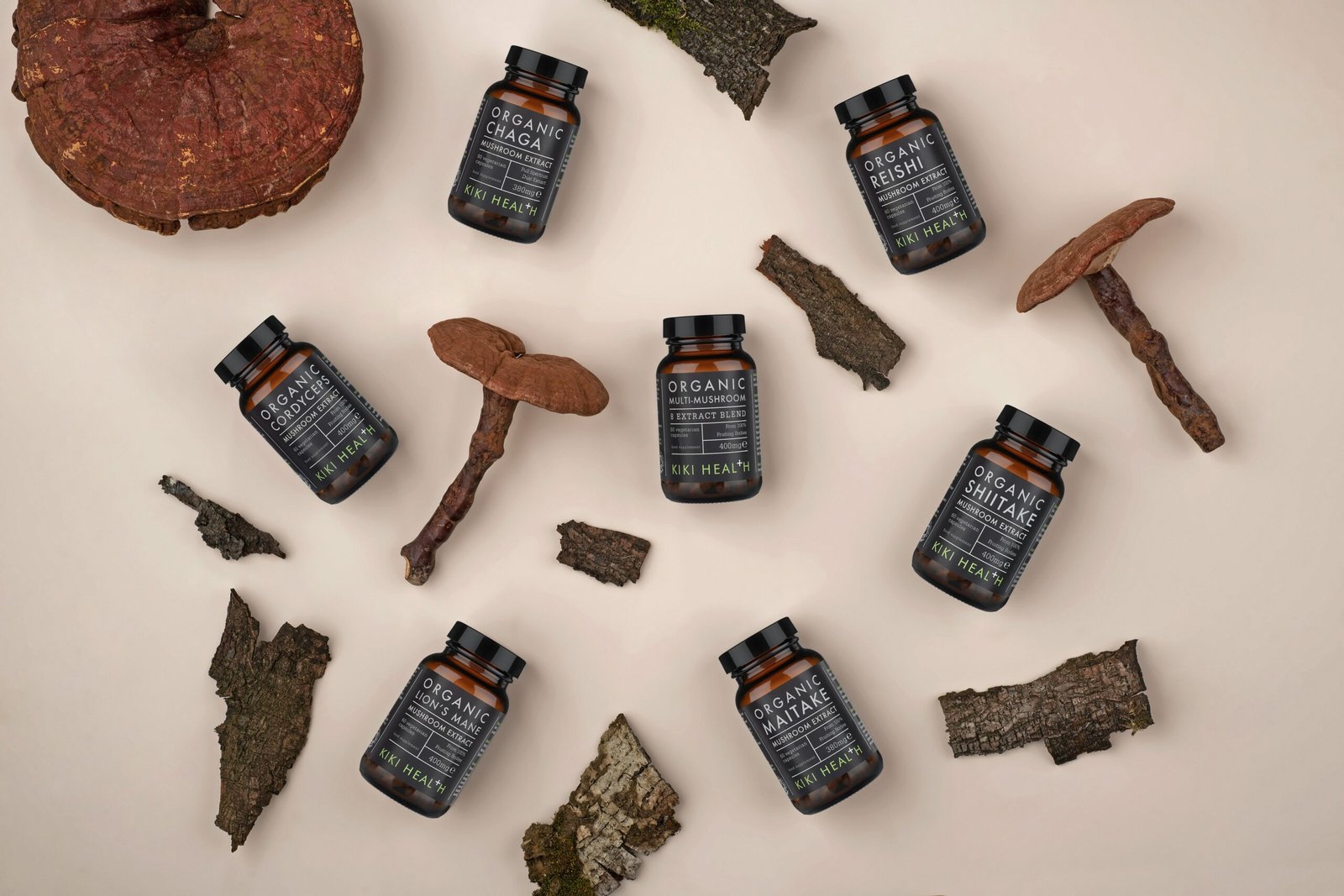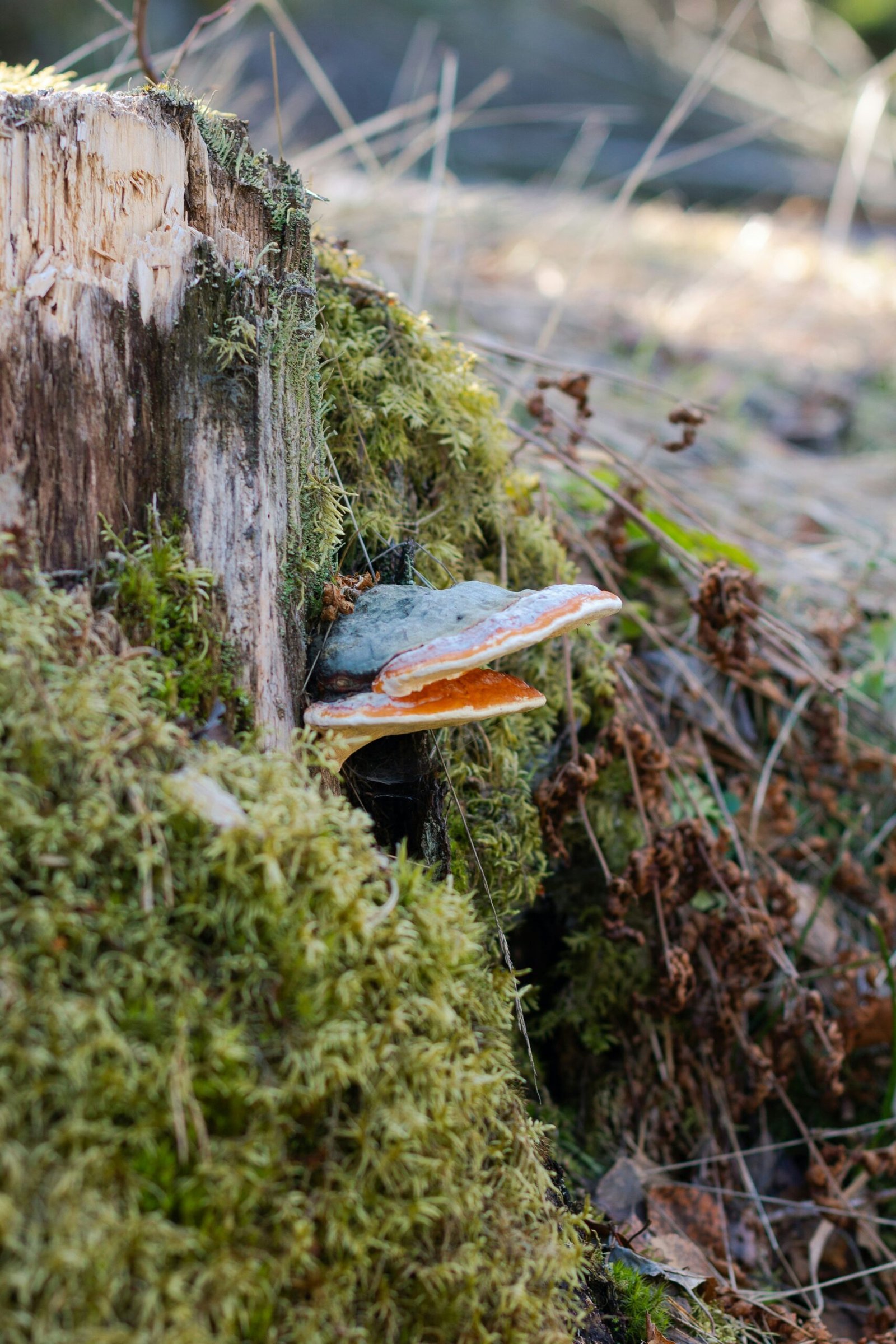Have you ever heard about a mushroom that can potentially enhance your health and well-being in numerous ways? If not, you’re in for a fascinating journey. Meet Inonotus obliquus, commonly known as Chaga, a mushroom that grows primarily on birch trees in cold climates. For centuries, this fungus has been a cornerstone in traditional medicine across northern Europe, Siberia, and parts of Asia. But what makes it so special? Let’s delve into the medicinal properties of Inonotus obliquus and uncover why it’s garnering attention in the realm of modern health and wellness.

What is Inonotus Obliquus?
Inonotus obliquus, or Chaga, is a parasitic fungus that predominantly thrives on birch trees in cold climates such as Northern Europe, Russia, and North America. Unlike many mushrooms, Chaga isn’t visually appealing, displaying a hard, charcoal-like exterior instead of the more common gilled or dome shapes you might expect from fungi. However, what’s inside this blackened crust is what’s remarkable: a rich, orange tissue teeming with bioactive compounds.
This mushroom has been a part of traditional medicine for centuries, often consumed as a tea or decoction. The indigenous peoples of Siberia, for instance, have relied on Chaga for its potential to boost immunity, enhance endurance, and generally uplift their quality of life.
Understanding the Bioactive Compounds
To appreciate why Inonotus obliquus holds medicinal potential, you need to know about its bioactive compounds. These naturally occurring chemicals contribute to the therapeutic effects attributed to this fungus.
Antioxidants
One of the most celebrated features of Chaga is its extraordinarily high levels of antioxidants. These compounds help neutralize harmful free radicals, molecules that can damage your cells and contribute to aging and diseases like cancer. The key antioxidants found in Inonotus obliquus include:
- Table – Major Antioxidants in Inonotus Obliquus
| Antioxidant | Function |
|---|---|
| Superoxide Dismutase (SOD) | Neutralizes superoxide free radicals, reducing oxidative stress. |
| Betulinic Acid | Inhibits the growth of certain types of cancer cells. |
| Melanin | Provides anti-inflammatory and anti-aging benefits. |
Polysaccharides
Polysaccharides are another vital group of compounds present in Chaga. These long-chain carbohydrates offer multiple health benefits, include:
- Immune Modulation: Polysaccharides can modulate the immune system, making it more efficient at responding to pathogens without causing excessive inflammation.
- Energy Boost: These carbohydrates offer a sustainable source of energy, enhancing your endurance and vitality.
Triterpenoids
Triterpenoids are a class of chemical compounds known for their potent anti-inflammatory and anticancer properties. In Chaga, these include betulin and betulinic acid, derived from the host birch tree. These compounds have shown promise in inhibiting tumor growth and promoting cancer cell death in various studies.
Medicinal Benefits of Inonotus Obliquus
Based on its rich profile of bioactive compounds, Inonotus obliquus offers numerous medicinal benefits. Here’s a closer look at what science and traditional wisdom say about this remarkable mushroom.
Immune System Support
Chaga has been long revered for its ability to bolster the immune system. Thanks to its abundant polysaccharides and antioxidants, it acts as an immunomodulator, meaning it can help regulate your immune system to work more efficiently. By enhancing the activities of white blood cells, Chaga ensures your body is better prepared to fend off various pathogens.
Cancer-Fighting Properties
One of the most exciting areas of research on Chaga involves its potential anticancer effects. The high levels of antioxidants, particularly Superoxide Dismutase (SOD) and betulinic acid, have shown promise in inhibiting the growth of cancer cells. Some studies suggest that Chaga can induce apoptosis (programmed cell death) in cancer cells without affecting healthy cells, making it a subject of interest in oncological research.
Anti-Inflammatory Effects
Chronic inflammation is a root cause behind many diseases, including arthritis, cardiovascular diseases, and even Alzheimer’s. Chaga’s rich melanin content and other anti-inflammatory compounds can help mitigate inflammation. Regular consumption of Chaga may assist in reducing symptoms associated with chronic inflammatory conditions.
Antiviral Properties
Emerging research suggests that Chaga may also offer antiviral benefits. Various compounds within the mushroom have demonstrated activity against viruses such as HIV and Hepatitis C. While more research is needed, Chaga’s ability to enhance the immune system may provide a valuable line of defense against viral infections.
Liver Protection
Your liver is essential for detoxifying your body, and Chaga may offer some protection against liver damage. The antioxidants in Chaga help reduce oxidative stress on the liver, potentially preventing conditions like fatty liver disease. Studies have shown that regular consumption of Chaga can help maintain liver health and function.
Digestive Health
Chaga contains compounds that promote digestive health. Its anti-inflammatory properties can help alleviate symptoms of gastrointestinal disorders, such as Crohn’s disease and ulcerative colitis. Additionally, the polysaccharides in Chaga serve as prebiotics, promoting the growth of beneficial gut bacteria.
Skin Health
The melanin content in Chaga helps protect your skin from damage caused by ultraviolet (UV) radiation. Its anti-inflammatory and antioxidant properties make it an ideal candidate for improving skin conditions like eczema, psoriasis, and acne.
Stress Reduction and Mental Wellness
Chaga also holds adaptogenic properties, which means it helps the body adapt to stress. Regular intake can help regulate mood, reduce anxiety, and enhance mental clarity. Adaptogens like Chaga support your adrenal glands, ensuring better hormonal balance and stress management.
How to Use Inonotus Obliquus
So, how can you make Chaga a part of your daily routine? There are several ways to consume this versatile mushroom.
Tea and Decoctions
One of the most traditional methods of consuming Chaga is by making a tea or decoction. Simply simmer Chaga chunks or powder in water for an extended period, allowing the bioactive compounds to release into the liquid. This method has been used for centuries and remains one of the best ways to enjoy Chaga’s benefits.
Tinctures
Tinctures offer a more concentrated form of Chaga. These are usually alcohol-based extracts that you can take in small, measured doses. Tinctures are convenient and highly effective, making them a popular choice for those looking to gain health benefits quickly.
Capsules and Supplements
If you prefer a more standardized approach, Chaga supplements in the form of capsules or tablets are available on the market. These formulations ensure you’re getting a specific dosage, making it easier to incorporate into your daily routine.
Topical Applications
Given Chaga’s benefits for skin health, it’s not surprising that topical formulations like creams and lotions are also available. These can be applied directly to the skin to alleviate conditions like eczema or psoriasis.

Potential Side Effects and Precautions
While Chaga is generally considered safe for most people, it’s important to note that it may interact with certain medications or conditions. For example, Chaga may have blood-thinning effects, making it potentially risky for those on anticoagulant medications. Always consult your healthcare provider before starting any new supplement, especially if you have existing health conditions or are taking other medications.
Table – Possible Interactions and Precautions
| Medication/Condition | Potential Interaction |
|---|---|
| Anticoagulants | Increased risk of bleeding |
| Diabetes Medications | Potential additive hypoglycemic effect |
| Autoimmune Diseases | Immune-modulating effects may interfere |
| Surgery | Discontinue use two weeks before surgery |
Future Research and Potential
The current body of research on Inonotus obliquus is promising, but there is much more to learn. Ongoing studies aim to explore its full medicinal potential, particularly in areas like cancer treatment, antiviral therapies, and anti-aging solutions. The future of Chaga in modern medicine looks bright, and it wouldn’t be surprising to see this ancient remedy making its way into cutting-edge treatments.
Areas for Future Study
- Cancer Treatment: More clinical trials are needed to establish Chaga’s efficacy and safety as a complementary treatment for cancer.
- Antiviral Therapies: Additional research could help identify how Chaga’s antiviral properties can be harnessed against emerging viruses.
- Aging: Long-term studies may better elucidate how Chaga’s antioxidant and anti-inflammatory properties can contribute to healthy aging.

Conclusion
Inonotus obliquus, or Chaga, is more than just a fascinating fungus; it’s a treasure trove of medicinal properties that have the potential to enhance your health and well-being. Whether you’re looking to boost your immune system, fight inflammation, or explore its cancer-fighting properties, Chaga offers a versatile and potent natural remedy. By understanding and utilizing this ancient mushroom, you may find a valuable ally in your journey towards better health.
